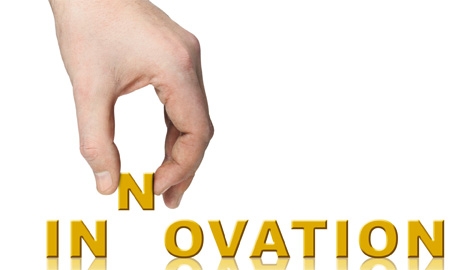In December of 2006, Malaysia’s Ministry of Science, Technology and Innovation (MOSTI) launched its Brain Gain Malaysia programme to fast track the country’s transition to an innovation-led economy by leveraging the talent pool of the Malaysian Diaspora and foreign researchers, scientists, engineers and technopreneurs. The programme was complemented by MOSTI’s Human Capital Development initiatives, which target an increase in the critical mass of skilled professionals to 50 researchers, scientists and engineers per 10,000 workers in the labour force.
The Brain Gain programme was followed in 2007 by the introduction of MOSTI’s cluster approach, which prioritised five main areas: biotechnology, information and communication technology (ICT), industry, sea to space, and science and technology services. The same year, the Ministry also introduced its National Innovation Model to stimulate both market-driven innovation and technology-driven innovation. These measures, along with other initiatives, have served to support MOSTI’s mandate to add value to Malaysia’s agricultural and industrial sectors and to help develop the new economy, in particular ICT and biotechnology.
These efforts are already starting to pay dividends. Malaysia performed well in the World Economic Forum’s Global Competitiveness Report for 2010-2011, excelling in the areas of educational quality, technology transfer and quality of scientific research institutions.
Considering intellectual property a key factor the future of its knowledge-based economy, the Government aims to encourage an environment where research and development (R&D) will flourish. This drive for innovation in Malaysia is gaining in momentum. Last year, Prime Minister Najib Razak stated that “evidence clearly shows that the keys to success for developed countries are innovation and creativity.”
He added that a new economic model based on innovation, creativity and value-added activities would multiply per capita income over the next 10years, saying that countries which favoured innovation, such as Japan, Finland, Sweden, Switzerland and the United States, developed more advanced economies as a result.
Accordingly, the double thrust of the National Mission 2006-2020 aims to move the economy up the value chain while raising Malaysia’s capacity for knowledge, creativity and innovation, leading to world-class R&D. In sectors such as palm oil and rubber, the country is already a world leader thanks to the investments it has made in R&D.
Director general of the Malaysia Investment Devel-opment Authority (MIDA) Datuk Jalilah Baba has emphasised that Malaysia would like to become a base for R&D activities, design and engineering, and to move ahead in alternative energy. Consequently, MIDA is working closely with a number of the country’s top universities in order to produce the graduates needed for the targeted industries.
In London last year, Deputy Prime Minister Muhyiddin Yassin echoed these thoughts, noting that Malaysia was now on a higher plane of industrialisation, focused on attracting quality and high technology investments, as well as capital-intensive, high value-added, knowledge-based and skills-intensive operations. He confirmed that Malaysia’s “priority sectors are advanced electronics, information and communications technology, machinery and equipment, biotechnology, medical devices and renewable energy.”
Accordingly, MOSTI has proposed an increased allocation of 1 per cent of gross domestic product (GDP) for R&D under the 10th Malaysia Plan. Currently allocation stands at just 0.7 per cent. Although this is higher than some regional counterparts, Malaysia intends to match countries like Japan and Korea, which spend about 2 per cent of GDP annually on R&D.
One sector set to benefit significantly from the country’s focus on innovation is electronics. Already one of the primary engines of the economy, the electronics and electrical appliances sector is the country’s greatest source of export revenues, derived from products ranging from electrical appliances to computers, integrated circuits and microprocessors. The aim is to now move the sector into higher value-added areas of automation, miniaturisation, digitalisation and multimedia applications.
In addition to education, research and collaboration with the private sector, the Government is nurturing the development of knowledge-based sectors through its contributions to physical and high-tech infrastructure such as the Malaysia Multimedia Super Corridor (MSC).
Originally launched in 1996, MSC is a Government-designated economic zone for R&D and the production of high-value added products. More than 900 domestic and international companies are now based there, operating in the fields of telecommunications, biomedical technology, agriculture biotechnology and advanced electronics. Multinationals in the park include Intel, Nokia, Toshiba, Fujitsu and IBM, while top domestic companies include Telekom Malaysia,
Malaysian Biotechnology Corporation and software development company IRIS.
The MOSTI-run Malaysian Biotechnology Corporation seeks to nurture and accelerate the growth of Malaysian biotechnology companies while actively promoting foreign investment in the sector. As an agency spokesperson remarked, “Biotechnology is an enabler. Right now, 50 per cent of the existing industries can benefit from using biotechnology. Around 35 per cent of drugs in the world are still based on natural substances and we have plenty here, and when it comes to renewables, Malaysia is the place to be.”
Telekom Malaysia, along with other national communications companies like YTL Communications, are leading initiatives to advance innovation in the ICT sector. In 2010, YTL launched its 4G Innovation Network, which provides a forum for 4G innovators across the world to experiment, collaborate and build applications. Through a twinning programme with Clearwire, the 4G Innovation Network links Malaysian developers to their global peers, including some of the world’s most creative minds in Silicon Valley.

0 COMMENTS